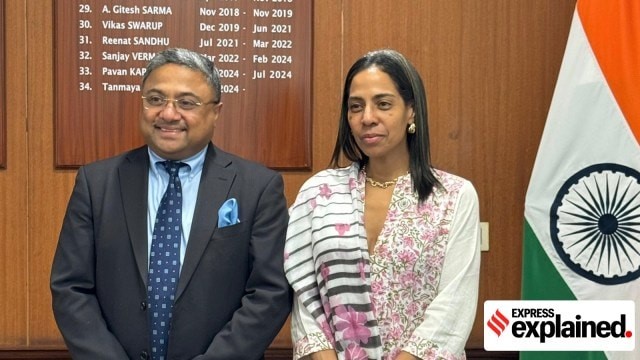India’s Deep-Sea Mineral Exploration in the Indian Ocean

- 05 Oct 2025
In News:
India has achieved a major milestone in deep-sea exploration by signing a new 15-year contract with the International Seabed Authority (ISA) for the exclusive exploration of Polymetallic Sulphides (PMS) in a 10,000 sq km area of the Carlsberg Ridge in the Indian Ocean.
With this agreement, India has become the first country in the world to hold two PMS exploration contracts, commanding the largest area allocated globally for such exploration. This advancement marks a blend of scientific progress, strategic foresight, and economic opportunity within India’s broader Blue Economy vision.
Polymetallic Sulphides and Their Significance
Polymetallic Sulphides are mineral-rich deposits found on the ocean floor, primarily near hydrothermal vents along mid-ocean ridges. Formed through interactions between seawater and magma beneath the Earth’s crust, they contain valuable metals such as copper, zinc, lead, gold, silver, and trace rare elements.
For India, these minerals are crucial for high-technology industries, renewable energy systems, and green technologies. Given the country’s limited terrestrial reserves, deep-sea exploration ensures resource security, supports the energy transition, and reduces import dependence on critical minerals.
India’s Deep Ocean Initiatives
India’s engagement with the ISA dates back over three decades. It was among the earliest countries to receive an area for polymetallic nodule exploration, earning the status of a “Pioneer Investor.” The first PMS exploration contract was signed in 2016 for the Central and Southwest Indian Ridges, and the latest agreement in 2025 extends exploration to the Carlsberg Ridge, located near 2°N latitude — significantly closer to India than the earlier sites.
The National Centre for Polar and Ocean Research (NCPOR) in Goa, under the Ministry of Earth Sciences (MoES), will begin exploration operations in 2026, employing geophysical, hydrographic, and near-seabed surveys.
These efforts are supported by the Deep Ocean Mission, launched by the Government of India to develop seabed mining technology, autonomous underwater vehicles (AUVs), and the Matsya submersible under the Samudrayaan Mission. This ecosystem strengthens India’s capacity for scientific research, environmental assessment, and mineral resource utilisation.
The Carlsberg Ridge: A Strategic and Scientific Hub
The Carlsberg Ridge is a part of the mid-ocean ridge system formed by the divergence of the Indian and Somali plates about 40 million years ago. With a spreading rate of 2.4–3.3 cm per year, it features hydrothermal vent systems ideal for PMS deposits. Its proximity to India enhances logistical feasibility and strategic relevance. The region’s exploration will expand understanding of deep-sea geology, marine ecosystems, and plate tectonics, while supporting India’s long-term maritime interests.
Exploration Challenges and Governance
PMS exploration is among the most technically demanding deep-sea missions, occurring at depths of 2,000–5,000 metres in rugged, volcanic terrains. It demands multidisciplinary collaboration across marine geology, geophysics, biology, and ocean engineering, supported by dynamic-positioning vessels, AUVs, and ROVs.
The ISA, functioning under the United Nations Convention on the Law of the Sea (UNCLOS), regulates seabed exploration beyond national jurisdictions. Applications must meet rigorous standards of environmental protection, financial capability, and scientific planning before approval.
Future Prospects
Beyond PMS, India has applied for exploration rights over cobalt-rich ferromanganese crusts on the Afanasy-Nikitin Seamount in the Central Indian Ocean, aligning with its Blue Economy and resource security goals. Hosting the 8th ISA Annual Contractors’ Meeting in Goa underscores India’s growing leadership in global seabed research governance.
Conclusion
India’s twin PMS contracts with the ISA mark a historic milestone in ocean science, resource diplomacy, and sustainable technology development. By combining strategic exploration, indigenous innovation, and environmental stewardship, India is positioning itself at the forefront of responsible deep-sea resource management — a critical pillar of its vision for a self-reliant and resilient Blue Economy.
